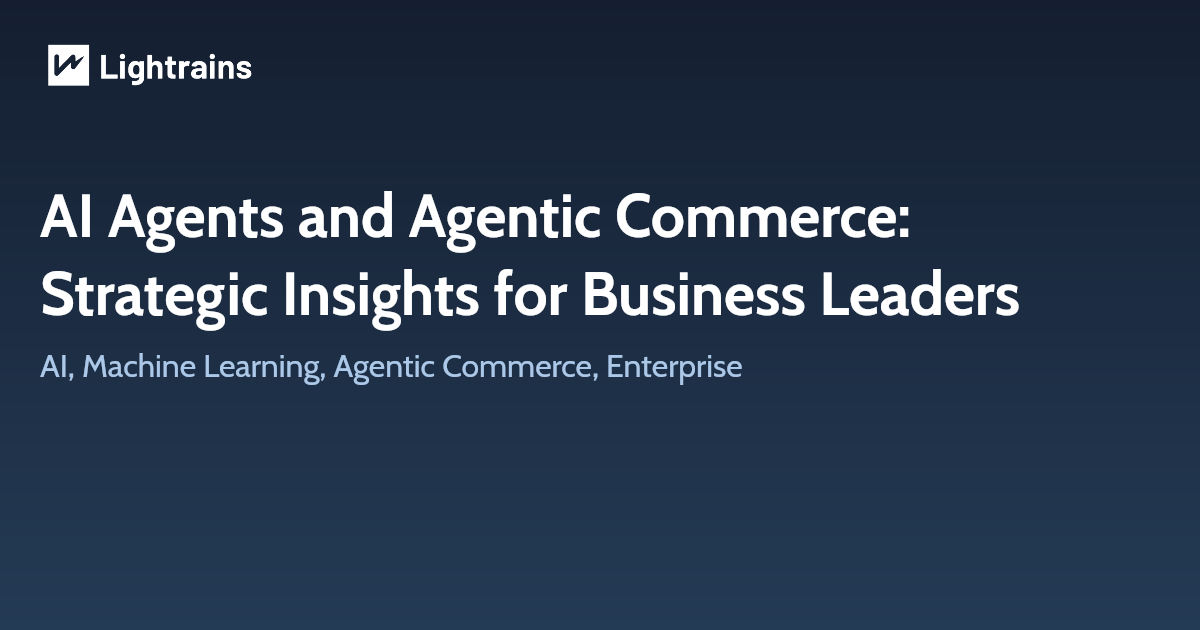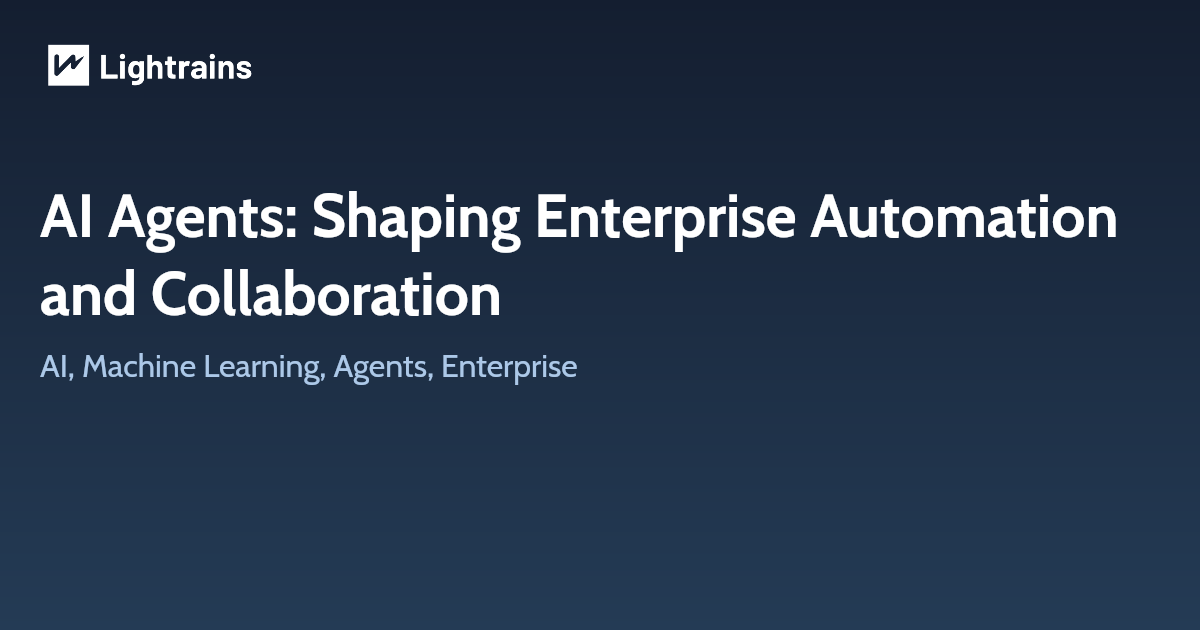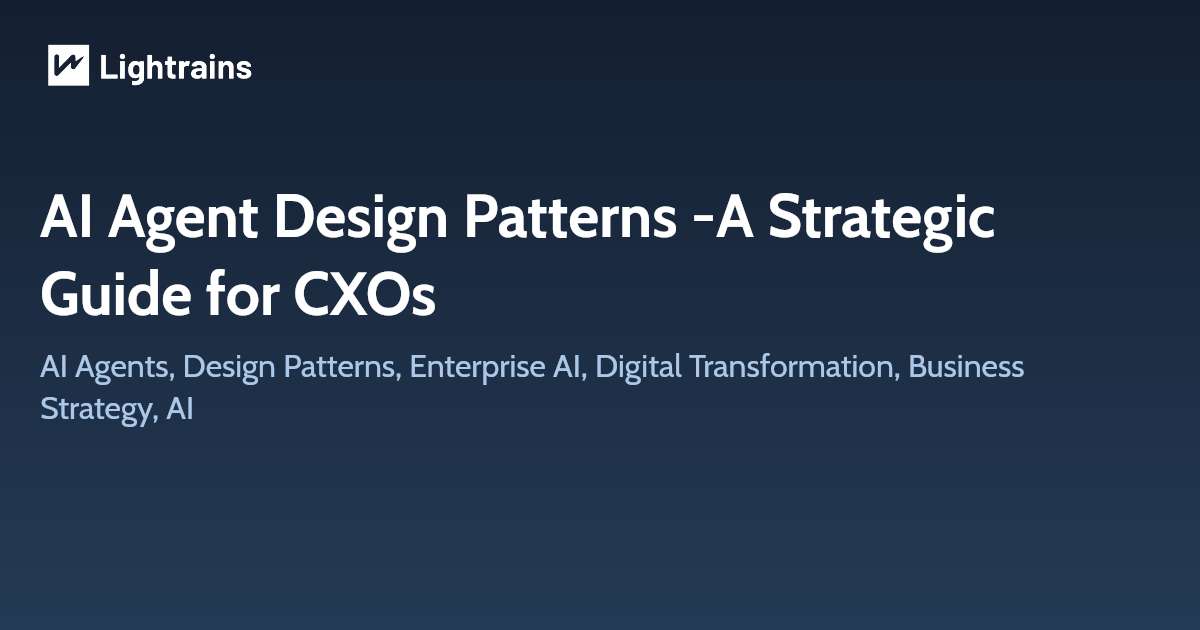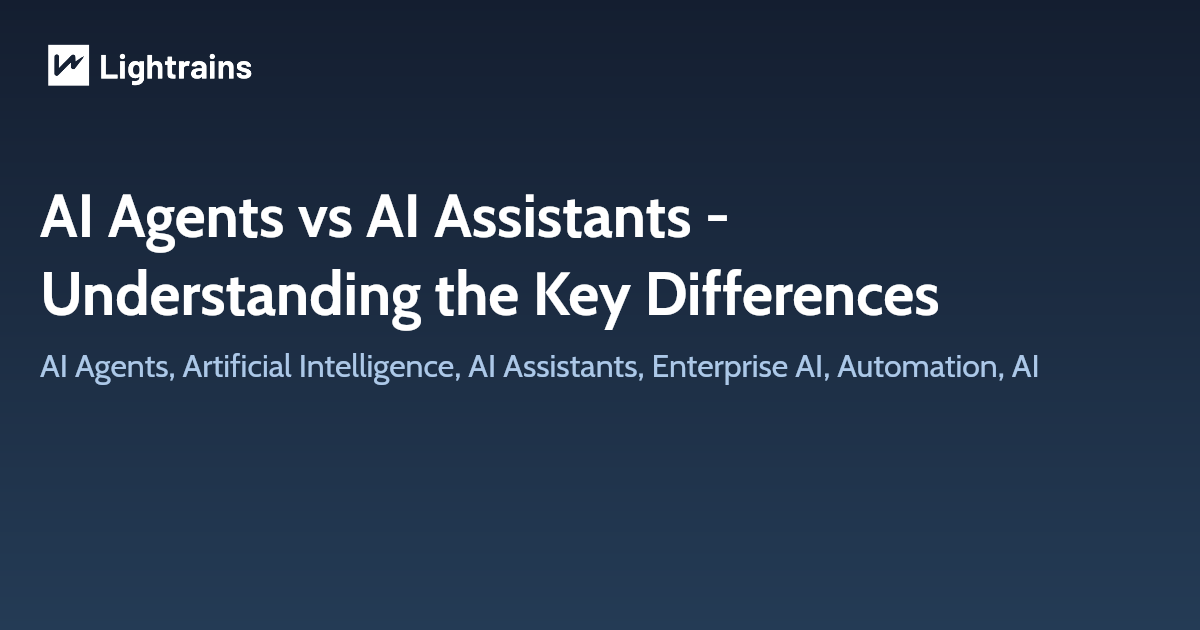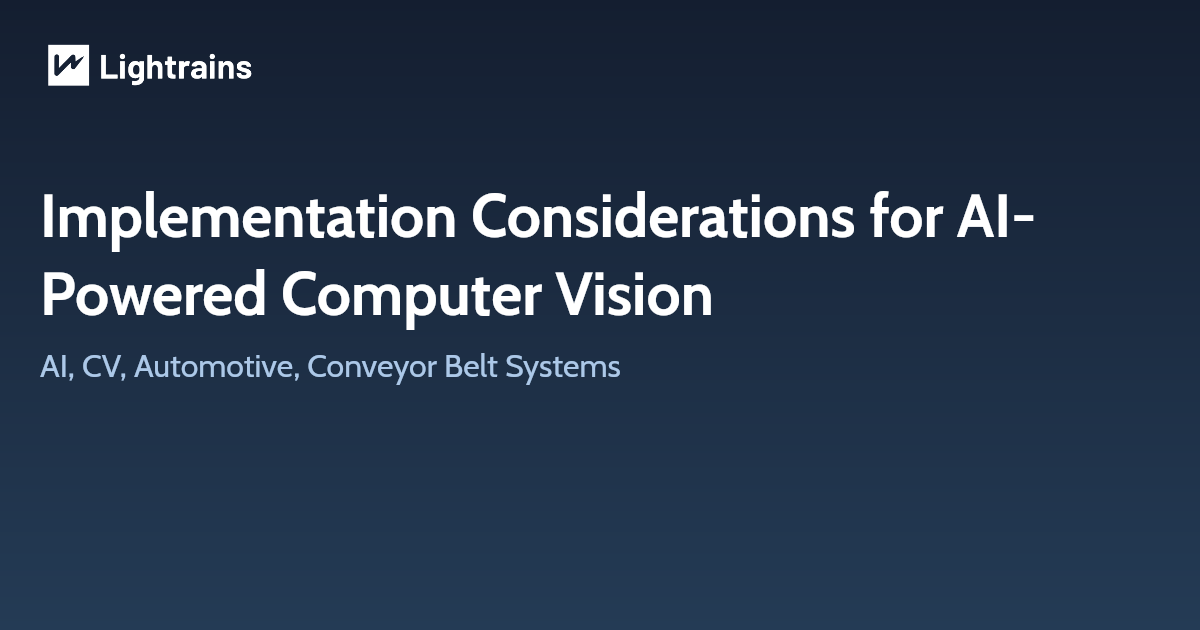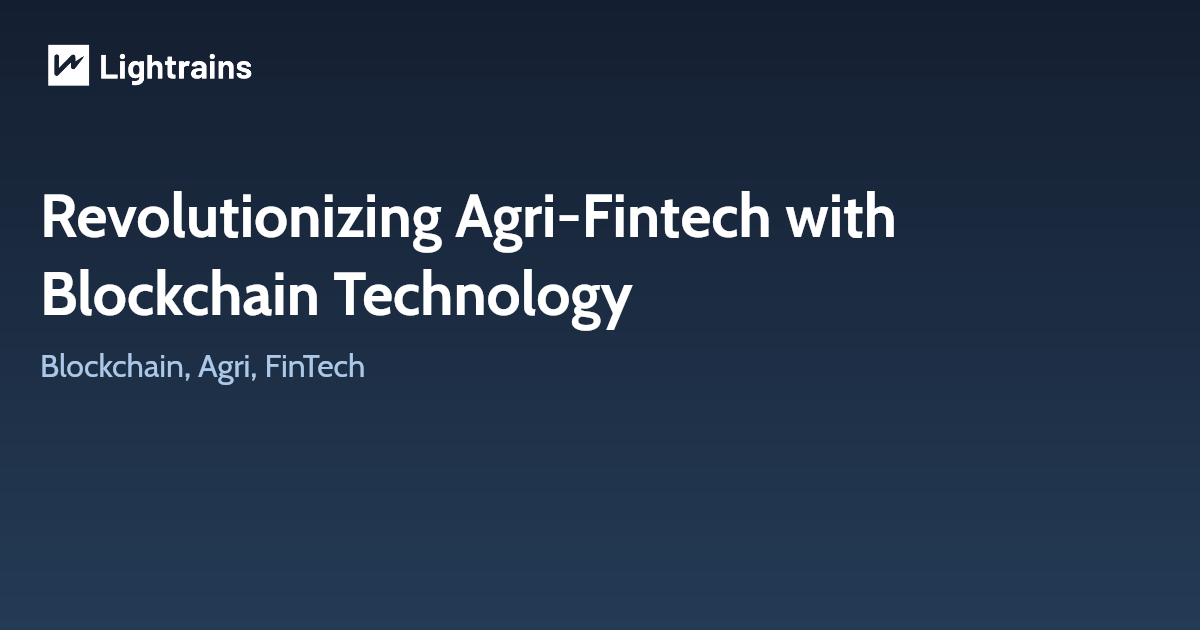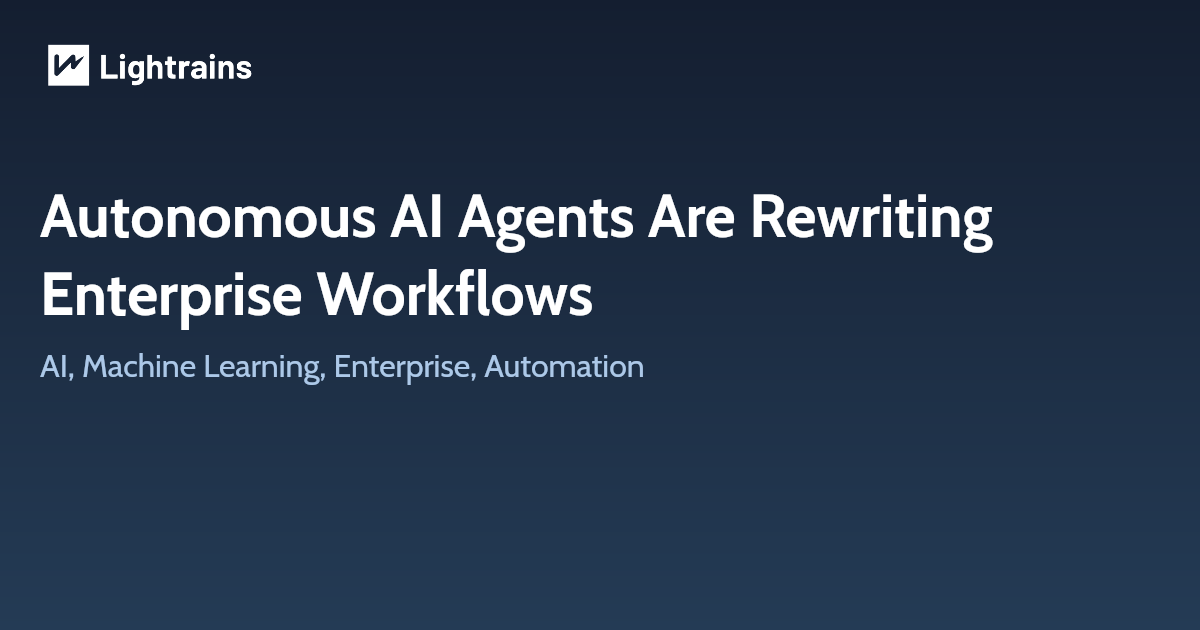
The rise of agentic AI
Enterprises are shifting from task‑focused AI assistants to autonomous AI agents that can plan, learn and act on your behalf. These agents connect data from customer‑relationship and resource‑planning systems, monitor events in real time and make decisions without constant human oversight. Recent research by Boston Consulting Group notes that agentic AI is transforming enterprise platforms into adaptive ecosystems, unlocking 20–30 percent faster workflows and reducing claim‑handling time by roughly 40 percent. Instead of waiting for human input, agents can reroute supply chains, resolve IT incidents or adjust pricing when conditions change, all while improving customer satisfaction and net promoter scores. Early adopters across insurance, finance and retail report measurable gains and higher employee satisfaction because tedious tasks disappear. Understanding how these systems work will help you decide when to deploy them and how to mitigate risks. Lightrains has been exploring these patterns in our AI agent design patterns series and believes agentic AI will redefine software architecture.
From assistants to autonomous agents
Where traditional assistants rely on scripts or static workflows, autonomous agents continuously learn from new data, update their models and interact with other agents to achieve goals. Boston Consulting Group highlights how agents can manage supply shortages, schedule maintenance or trigger marketing campaigns without waiting for human approval. In insurance, they ingest claims, check policy rules, assign adjusters and even recommend settlement amounts, cutting resolution time by 40 percent. In the financial sector, agents monitor transactions for compliance and identify emerging risks, helping risk managers act sooner. During the transition, governance becomes critical; Nabil Bukhari of Extreme Networks warns that uncontrolled AI sprawl can create silos and unclear returns. You need clear policies, access controls and continuous monitoring to ensure agents act ethically and within company guidelines. Lightrains’ AI, ML & CV development services focus on building robust, explainable agents with strong audit trails so you can trust automated decisions.
Business benefits and implementation checklist
When implemented thoughtfully, agentic AI delivers tangible business results:
- Speed: early pilots report 20–30 percent faster workflow cycles and 40 percent reductions in claim‑handling time.
- Productivity: employees spend less time on repetitive tasks and can focus on strategic work. Many organizations see net promoter scores improve by double digits.
- Accuracy: agents analyze large datasets and reduce human errors, offering consistent decisions.
- Scalability: once trained, agents can manage thousands of parallel events, making them ideal for supply chains, customer support and compliance.
To realize these benefits you should:
- Align agents with clear business objectives and measurable outcomes.
- Integrate agents with enterprise systems (ERP, CRM, finance) using secure APIs and permission models.
- Set up governance frameworks that define risk tiers, approval checkpoints and escalation paths.
- Monitor agent performance and retrain models regularly to avoid drift.
- Educate your teams about how agents work and how to intervene when necessary. Our blog post on AI agents vs. AI assistants explains these distinctions and offers practical tips.
Mitigating risks and ensuring trust
Autonomous agents raise important questions about accountability, data privacy and ethics. Analysts warn that layering multiple agents without oversight can increase complexity and administrative burden. You should apply granular permissions, define spend limits and maintain human‑in‑the‑loop review points. Incorporating model context protocols helps ensure each agent acts within its intended scope. Effective communication is essential too: employees must know when an agent made a decision and how to override it. Lightrains’ technology consulting practice can help you design agentic architectures with built‑in compliance and auditability. By investing in transparent AI governance today, you’ll be better prepared for future regulatory shifts and will earn stakeholder trust.
Why Lightrains?
Lightrains blends deep technical expertise with strategic insight. Our teams build custom AI agents and integrate them with existing systems, whether you’re automating claim processing or creating a predictive supply chain. We focus on long‑term partnerships—helping you define a roadmap, implement securely and train your teams. Through our product development services, we deliver scalable solutions that evolve with your business. Reach out to explore how autonomous agents can transform your organization and to discuss pilot projects tailored to your workflows. Together, we can unlock the next level of enterprise efficiency.
This article originally appeared on lightrains.com
Leave a comment
To make a comment, please send an e-mail using the button below. Your e-mail address won't be shared and will be deleted from our records after the comment is published. If you don't want your real name to be credited alongside your comment, please specify the name you would like to use. If you would like your name to link to a specific URL, please share that as well. Thank you.
Comment via email